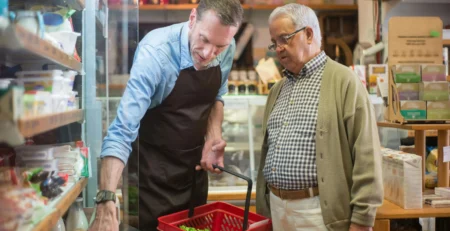Losing a loved one can be heart-wrenching, and the same is true when we lose a beloved pet. I know because I’ve experienced the loss of cherished animals that were with me, generally from the time they were babies until they took their last breaths. The death of my Shetland Sheepdog, Cody, stands out the most. At nearly 13 years old, Cody was battling arthritis, and despite treatment from the vets, his pain became overwhelming. One day, I came home from work to find he had been gnawing at his leg, causing significant damage. It was clear he was suffering, and I knew it was time to let him go. Taking him to the vet was one of the hardest decisions I’ve ever made. Cody passed away peacefully in my arms as I sat crying, feeling the weight of the moment. Even though the vets assured me it was the right thing to do, the pain of losing him was just as deep and difficult to bear.
Losing an adored pet can be just as painful as losing a person you love. While it’s natural to expect support from friends and family when mourning a human loss, the grief that comes with the death of a pet often goes unrecognised.
A pet’s passing away can generally be your child’s first experience with death, making it a significant moment for them to learn about grief and coping.
As parents, we play a vital role in helping our children get through this trying time. And when Cody died, I had to deal with not only my own grief, but also help to navigate my children’s grief as well. It’s important to know that your feelings and your children’s feelings are completely valid. Mourning the relationship you all shared with your pet is not only normal but also an essential part of validation. The specific reasons why it’s so painful grieving a beloved pet, are unique to that person – there are feelings you felt about this pet, that no one else feels – which is true for all grief.
Understanding the Implications
Pets often hold a special place in a child’s life. Offering unconditional love and friendship, they are often the first to welcome children in the morning and after school. It’s possible that losing a pet is the first time a child has experienced death, therefore it’s an important turning point in their emotional growth. Our actions now will influence our children’s coping mechanisms for loss throughout their lives.
Breaking the News
Informing your child of the pet’s passing is one of the most difficult things to deal with. Choose a peaceful, comfortable place where you can have uninterrupted one-on-one conversations. Adjust your approach according to your child’s age, maturity level, and life experiences.
If your pet is old or suffers from a chronic illness, think about discussing their health with them before they pass away. This may help in preparing your kids for what’s to come if euthanasia must be carried out, use age-appropriate terms, and emphasise that this is a kind method to end the pet’s suffering.
When utilising euphemisms such as “went away” or “put to sleep,” be cautious, especially with younger children who may take these expressions literally. Instead, even though it feels uncomfortable, use clear and honest language.
Honesty is the Best Policy
While it might be tempting to soften the blow with a white lie, telling your child that the pet “ran away” or “went on a trip” is not advisable. Such explanations might temporarily ease the pain, but they can lead to confusion, false hope, or anger if the truth comes out later. It’s better to be honest from the start, even if it means having a tough conversation.
If your child asks what happens after death, it’s okay to share your beliefs or simply admit that you don’t know. Death is a mystery, and it’s perfectly acceptable to acknowledge that.
Navigating the Grieving Process
Children may feel a range of emotions in addition to sadness since grief is a complex emotion. Without their pet, they could experience loneliness, guilt about not being kind to the animal on occasions when it wasn’t well, rage if the animal was put to sleep, or frustration that the animal couldn’t recover. Help your child in understanding that each of these feelings is normal and valid.
Don’t feel you need to hide your own sadness. Showing your emotions and talking about them openly sets an example for your children. It demonstrates that it’s okay to feel sad when we lose someone we love, to talk about our feelings, and to cry when we’re upset. Sharing your own experiences of pet loss can help your child feel less alone in their grief.
Moving Forward
Losing a beloved pet is an incredibly painful experience, and it’s natural to find yourself replaying their last moments. Especially if those final days were traumatic, ruminating on what happened can be common. However, instead of dwelling on the end, try to focus on the joyful times you shared. Cherish the favourite memories you have—the playful antics, the quiet moments, the unconditional love. Remember, your pet’s pain has passed; now, it’s important to care for yourself with the same love and compassion. The same with your child. As your child’s initial shock wears off, it’s important to help your child heal and move forward.
Here are some strategies that can help:
Honour Your Pet’s Memory
Creating a memorial or engaging in a bereavement ritual can also aid in the healing process. Here are some ideas to honour your pet’s legacy:
- Scatter Their Ashes: Choose a special place or keep them alongside photos in a dedicated spot at home.
- Plant a Living Tribute: A tree or flowering shrub can serve as a lasting memory.
- Create a Memory Box: Fill it with their collar, Favourite toys, or other cherished items.
- Memorial Keepsakes: Consider jewellery or art that incorporates their ashes. Searching for “pet cremation jewellery” can provide various options.
- Commission a Tribute: A painting, statue, or plush representation can be a comforting keepsake. A blanket with a picture of your pet printed on it. Websites like getphotoblanket.com.au offer a wide range of custom memorials.
- Cultural Expressions of Grief: Engage in practices meaningful to you, such as creating memorial tattoos.
- Express Through Writing: Pen a letter to your pet, journal your feelings, or write an obituary celebrating their life.
- Share Memories: Post photos and stories on social media to commemorate your pet and connect with others who understand your loss.
- Share stories: Encourage your child to share stories about their fond memories of the pet. Sharing funny or heartwarming stories can be therapeutic.
- Offer physical comfort: Sometimes, a hug can say more than words. Be generous with physical affection during this time.
- Express emotions creatively: Suggest drawing pictures, writing stories, or even composing songs about the pet as a way to process emotions.
- Keep talking: Don’t avoid mentioning the pet. Talking about them keeps their memory alive and shows that it’s okay to remember and miss them.
There’s no “right” way to grieve. It’s okay to take the time you need and seek support when you feel ready. By honouring your pet’s life and embracing your feelings, as well as assisting your children to similarly work through their grief, you can all begin the healing process while keeping your pet’s memory alive.
Age-Specific Considerations
How children understand and cope with death varies by age:
- Toddlers may not grasp the concept of death and might repeatedly ask where the pet is. Their seeming lack of concern isn’t a sign of insensitivity; they simply don’t understand yet.
- Preschoolers may start to understand death but might still struggle with its permanence.
- Grade schoolers can usually understand death better. If your pet is ageing or ill, this is a good age to start preparing them for the possibility of loss.
- Teenagers generally understand death abstractly but may have intense or unpredictable emotional reactions.
When to Seek Additional Professional Help
While grief is a normal process, sometimes children might need extra support. Consider seeking professional help if you notice:
- Persistent difficulty with daily functioning months after the pet’s death
- Preoccupation with thoughts about the deceased pet
- Substance use or other “acting out” behaviours
- Prolonged depression or suicidal ideation
Remember, there’s no set timeline for grief. Some children may take longer to process their emotions, and that’s okay.
Reach Out for Community Support
Connecting with others can provide much-needed comfort during this difficult time. A quick online search will reveal numerous resources and support groups dedicated to pet loss. Some options include:
- The Pet Loss Support Hotline (www.petsandpeople.com.au): Offers 24/7 grief support from trained pet grief counsellors.
- Paws for Talk: Pet quality of life and bereavement counselling. Helping you to make an informed decision about your pets quality of life, and supporting you through the grief and loss when you have lost an important member of your family.
- Griefline (www.griefline.org.au): 7 days a week between 8am to 8pm
- Forever in my heart: Pet loss counselling https://www.foreverinmyheartpetlosscounselling.com.au/
If you’re part of a religious or spiritual community, consider asking if they offer bereavement support for pet loss.
The Question of a New Pet
It’s natural to want to ease your child’s pain by getting a new pet. However, it’s important to frame this as a new adventure rather than viewing this as a replacement . Explain that while no pet can replace the one they lost, it is possible to bring joy and love into someone’s life by opening their heart to a new animal friend,
A Teachable Moment
As difficult as it is, it can serve as a valuable teaching moment for children. It teaches them about the nature of the cycle of life, the value of treasuring the time we have with loved ones, and how to handle difficult emotions. By supporting them through this process with empathy and honesty, we help them build emotional resilience that will serve them throughout their lives.
There’s no “right” way to grieve. Each child will process the loss differently, and that is perfectly normal. The most important thing is to provide a supportive, understanding environment where they feel safe expressing their emotions and remembering their beloved pet.
By approaching the situation with patience, honesty, and love, not only do we assist ourselves, we can also help our children navigate this difficult experience and emerge with a greater understanding of love, life, and loss and the “great circle of life”.













